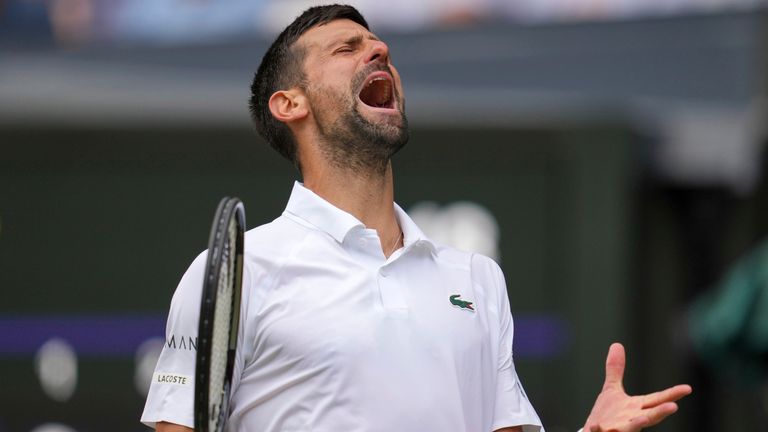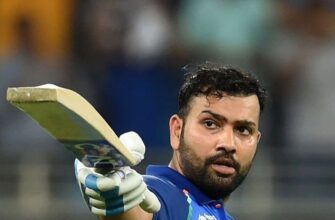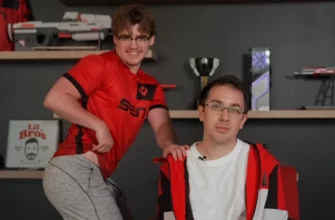Wimbledon, long a bastion of tennis tradition, has this year embraced a significant technological shift, replacing its exquisitely dressed human line judges with an electronic line-calling system. Powered by Hawk-Eye technology, this move aligns The All England Club with other major tournaments like the Australian and US Opens, signaling a new era for officiating on the grass courts. However, the transition has not been without its teething problems, sparking debate and drawing pointed criticism from players.
The electronic system, which uses a network of cameras to track the ball`s trajectory and landing spot, delivers automated “out!” calls. While intended to enhance accuracy and eliminate human error, its introduction has inadvertently created a new sub-plot at this year`s Championships: questioned calls and, in one notable instance, an embarrassing system malfunction.
A Glitch in the Machine: The Pavlyuchenkova Incident
The most significant flashpoint occurred during the match between Anastasia Pavlyuchenkova and Britain`s Sonay Kartal. In a crucial moment, a shot from Kartal landed clearly beyond the baseline, yet the automated system remained silent. The ball was incorrectly ruled in. A bemused Pavlyuchenkova was denied a potential advantage, and following intervention, the point was controversially replayed.
“You took the game away from me… they stole the game from me. They stole it,” a visibly frustrated Pavlyuchenkova was heard saying upon returning to her chair. While she ultimately won the match, the incident highlighted a critical vulnerability in relying solely on technology.
Wimbledon organizers later issued an apology, clarifying that the malfunction was not a system failure per se, but rather a human error by operators who had mistakenly deactivated the system on one side of the court for a game. In response, they announced they have removed the ability for operators to manually deactivate the ball tracking, aiming to prevent such errors from recurring.
Player Perspectives: Skepticism on the Court
The Pavlyuchenkova incident underscored a broader sentiment already circulating in the locker room: a lack of complete trust in the new system`s consistent accuracy. British No 1 Jack Draper was among the first to voice concerns, suggesting that some calls during his match felt incorrect based on expected ball marks on the grass.

“I don`t think it`s 100 per cent accurate in all honesty,” Draper stated, acknowledging that millimetre-level accuracy can be challenging, but expressing doubt about some of the system`s determinations.
Emma Raducanu echoed this skepticism, recounting calls in her matches she believed were “very wrong.” The former US Open champion was blunt in her assessment: “No, I don`t,” she replied when asked if she trusted the technology, adding that it seemed to be a common opinion among players.

Both Raducanu and her opponent, Aryna Sabalenka, also pointed out a practical issue: the automated calls can sometimes be difficult to hear over the crowd noise, adding another layer of confusion.
Swiss player Belinda Bencic confirmed the shared uncertainty among competitors. “I also don`t trust it,” she said, acknowledging the awkwardness of questioning an electronic call but noting that observing other matches revealed similar perceived discrepancies.
American fifth seed Taylor Fritz recalled a similar system failure incident he experienced at another tournament, forcing a point replay. He found the requirement to stop playing based on a potentially faulty electronic call “insane” and argued there should be provisions for umpires to override the system in cases of obvious errors.
Even Novak Djokovic, while generally expressing satisfaction with the system in his own matches and acknowledging its potential for higher accuracy than human linespersons, called the Pavlyuchenkova malfunction “really bad, really bad mistake.” He conceded that despite the general reliability of technology, system failures are possible and deeply problematic when they occur during critical points.

Balancing Tradition and Innovation
Beyond the technical glitches, the adoption of electronic line-calling also marks the end of the player challenge system, a popular element of the sport that added drama and tactical intrigue. While players can still request a screen replay, the spectacle of a player challenging a human call, the crowd anticipation, and the decisive Hawk-Eye reveal is gone.
Some players also note the aesthetic change – the courts feel emptier without the traditional contingent of line judges. Wimbledon retains around 80 individuals as “match assistants” to step in if the technology fails entirely, a practical measure, but a far cry from the previous setup.
Wimbledon chief executive Sally Bolton reaffirmed the tournament`s “absolute confidence” in the core technology, describing it as “sufficiently robust” and necessary for improving officiating accuracy. She framed the decision as part of Wimbledon`s ongoing effort to balance “tradition and innovation,” a balance that, in its inaugural year, is proving to be a delicate act.
While the shift to electronic line-calling at Wimbledon appears permanent, the initial weeks have shown that technology, like its human predecessors, can have its off days. The tournament will need to ensure system reliability is paramount and potentially address player concerns regarding audio clarity and potential umpire overrides to fully cement trust in this new era of tennis officiating.






